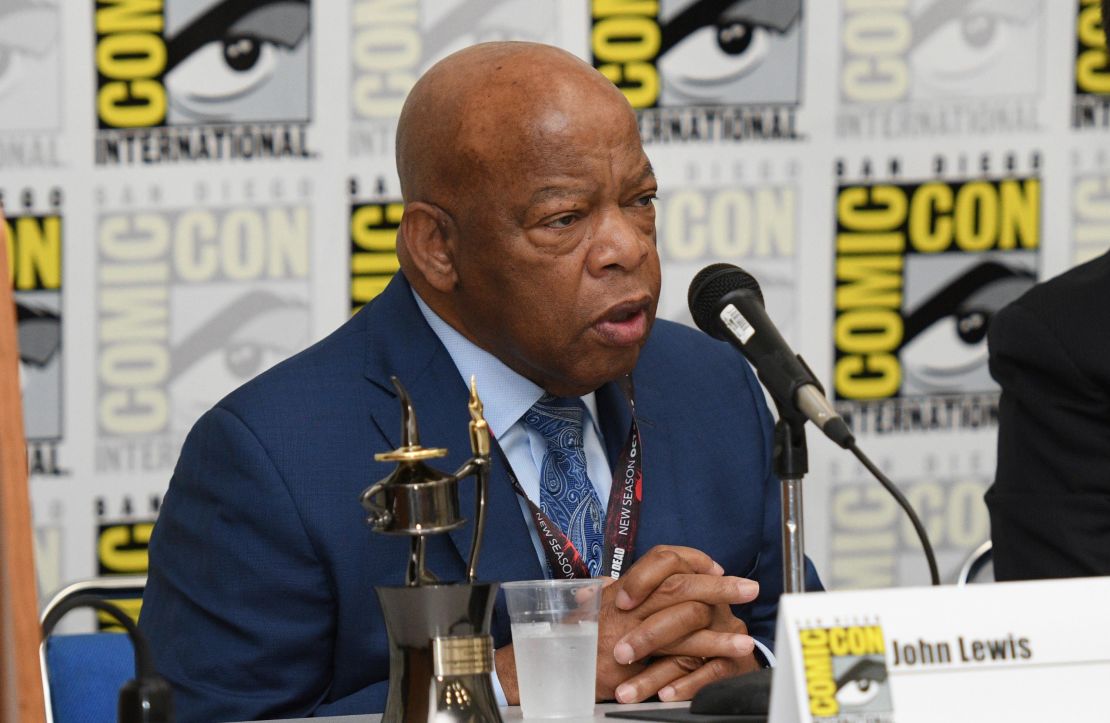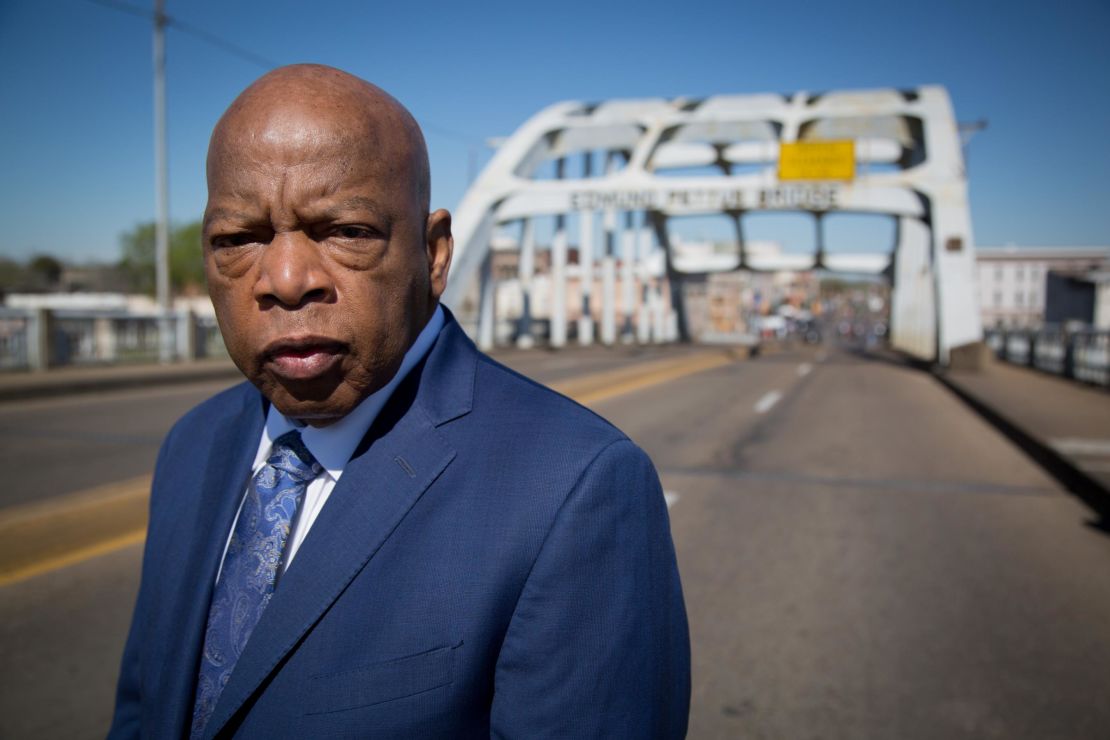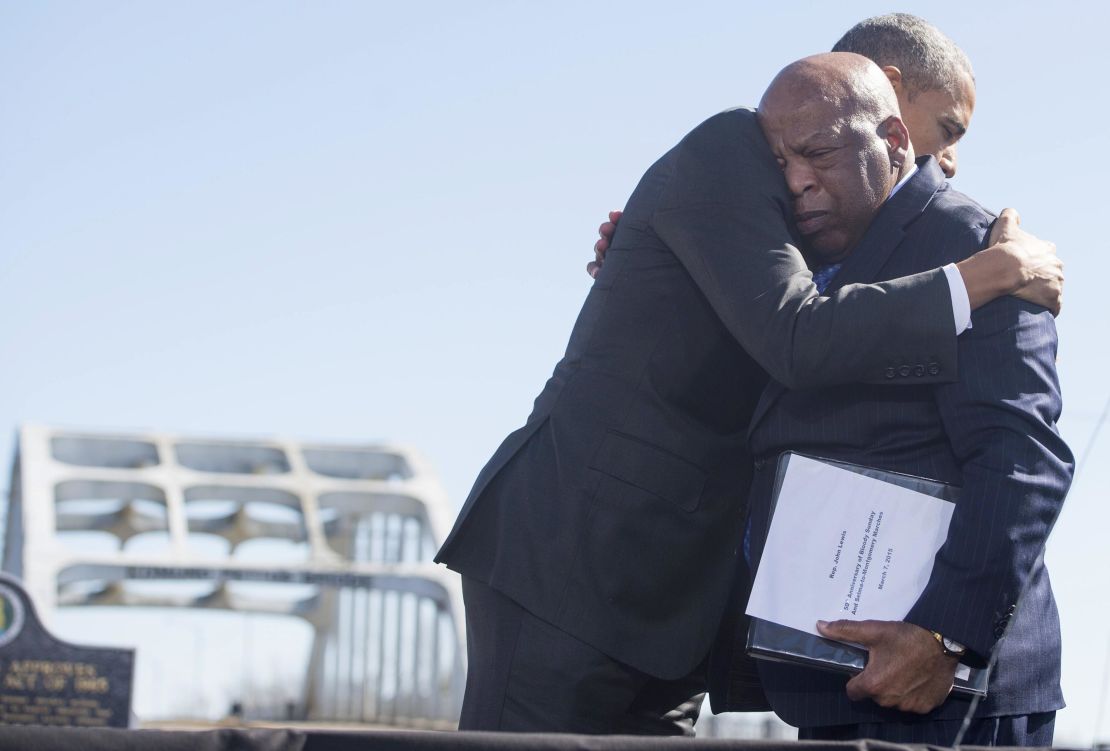Editor’s Note: This story was published on John Lewis’ 80th birthday in February. CNN Films’ “John Lewis: Good Trouble” airs Sunday, September 27 at 9 p.m. ET. Follow Golden State Warriors’ Draymond Green on Twitter to join a virtual watch party.
Talk to anyone who has known John Lewis for any length of time and you’ll eventually hear the story about him preaching to the chickens.
It goes something like this: Lewis was a shy black kid with a stutter who was determined to be a preacher while growing up in rural Alabama during the Jim Crow era. He’d practice his calling by going to the henhouse on his family’s farm and delivering sermons to his captive flock.
Read more from John Blake:
Lewis – whose family called him “Robert,” his middle name – grew so attached to his feathered congregation that he conducted chicken weddings, baptisms and even eulogized chicken funerals. When his chickens were unavailable for worship, he would corral his younger siblings and cousins and preach to them. They nicknamed him “Preacher.”
The Georgia congressman, whose district includes Atlanta, has told the chicken story so much that when a friend invited him to deliver some brief remarks at a reunion of civil rights leaders, he teased Lewis with a warning.
“We told him, ‘Forget the chicken. We heard the chicken stories,’” says Larry Rubin, a former field secretary for the Student Nonviolent Coordinating Committee (SNCC), who worked alongside Lewis. “‘You only have five minutes. That chicken story takes 10 minutes.’”
Time is once again pressing on the longtime Democrat, who turns 80 today. Lewis disclosed in December that he’s been diagnosed with stage 4 pancreatic cancer, an aggressive form that sometimes claims its victims within months.
Lewis is irreplaceable. He is the only surviving speaker from the 1963 March on Washington. He was on the front lines of the most dangerous campaigns of the civil rights era: the student sit-in movements, the Freedom Rides and of course that notorious 1965 moment at the Edmund Pettus Bridge in Selma, Alabama, where Lewis and other marchers were attacked by state troopers with whips and nightsticks.
John Lewis' life in pictures
Lewis’ place in history has been so thoroughly documented that it’s hard to find anything new to say about him – unless you talk to some of the people who have known him the longest.
Here are some of their favorite John Lewis stories, plus one gem from a journalist who covered Barack Obama’s inauguration.
He dressed up at Comic-Con
Lewis is often portrayed as a solemn voice of conscience, but friends say he knows how to have fun. They describe a man who breaks into corny dances, who belts out “Lean on Me” at parties and will even do cosplay – as himself.
In 2015, Lewis attended San Diego Comic-Con to promote his graphic novel series, “March,” one of which won the National Book Award. But he didn’t want to just attend the convention, says Andrew Aydin, co-author of “March” and a policy adviser to Lewis.
“I want to dress up,” he told Aydin.

Lewis’ costume was a replica of what he wore at the Edmund Pettus Bridge: a trench coat, a backpack containing two books, and a toothbrush and toothpaste. Aydin, a self-professed comic geek, says Lewis quickly got into the spirit of Comic-Con – even if he didn’t know all the characters.
“Who is that?” he asked Aydin as they passed an attendee with hairy sideburns and blades on his hands.
“Sir, that’s Wolverine.”
“Who’s that?”
“That’s the Incredible Hulk.”
At their Comic-Con panel, something unexpected took place. A group of elementary school students – children of all races – came to hear Lewis. After his talk, Lewis decided to join hands with them and stage an impromptu march through the hall.
By the time they got to the show floor, Lewis was leading a line of about 1,000 marchers. Some onlookers were near tears as they watched him pass.
The graphic novel had made Lewis known to a new generation.
“He was walking through the hallways and the seas just parted,” Aydin says. “It felt like it was the first time that people had seen a real hero.”
He crossed the aisle to hug a rival
The public persona of some civil rights leaders didn’t match how they acted backstage when few were looking. Some of the movement’s leaders were notorious for their egos, pettiness and their demeaning treatment of women.
None of those accusations, though, surface when people talk about Lewis.
“We called Martin Luther King ‘De Lawd.’ We called Lewis ‘the Saint,” Rubin says. “John Lewis was John Lewis in all circumstances.”
Many of Lewis’ political foes also speak highly of him. When Johnny Isakson, the Republican senator from Georgia, was honored last November before his retirement, Lewis paid an emotional tribute to him on the House floor.

As he finished speaking Lewis said, “I will come over to meet you, brother.”
He went to Isakson as the Republican, who was battling health problems, walked gingerly towards him. The two men embraced.
“I wish all of America could be here to see that,” state Rep. Austin Scott said afterwards.
George Wallace’s daughter made him cry
Lewis had another warm embrace for the daughter of one of his most formidable foes, George Wallace, the former segregationist governor of Alabama.
When Peggy Wallace Kennedy was invited to Selma to march across the Edmund Pettus Bridge in 2009 with civil rights leaders, she found herself sitting alone in a room as other dignitaries chatted together. Lewis approached her.

“He saw this person who was nervous and looked unsteady and he come over and said, ‘I’m from Pike County,’ ” she told CNN.
As the civil rights leaders stood for the commemorative march, Lewis told Kennedy, “Well, sister, it’s time for us to move on now.” Lewis held her hand throughout.
Several years later, when she returned to Alabama to speak at another civil rights commemorative event, Lewis was on the stage with her.
Near the end of her speech, she turned to Lewis and acknowledged he had not been recognized by her late father when he was Alabama’s governor.
“But today, as his daughter and as a person of my own, I want to do for you what my father should have done and recognize you for your humanity and for your dignity as a child of God, as a person of goodwill and character and as a fellow Alabamian and say, welcome home.”
Lewis arose, walked toward her and grasped her hands.

“Why do you always make me cry?” she says he said to her.
“Brother, I don’t mean to.”
“But sister you do.”
Years later, the emotion in Kennedy’s voice is still apparent from their encounter. She wrote about Lewis in her recent memoir, “The Broken Road.”
“He does not have an unlovable bone in his body,” she says today.
He wore his battle scars on his chest
Lewis might not have been the most eloquent or physically imposing leader, but he earned respect for something else: His toughness. People recall how he seemed to come to every civil rights meeting with bandages on his head because he was beaten so much.
“People who think of John as cuddly and all of that, I say I want to see how many of them would be fierce enough to deal with the pervasiveness of segregation and stand up to it when standing up meant you got your ass kicked,” says Courtland Cox, one of SNCC’s leaders.
Lewis literally wore his beatings on his chest. Each time a SNCC worker participated in a campaign, they received pins or badges. They were like battle ribbons for soldiers, says Cleveland Sellers, another SNCC colleague.

Lewis had more than anyone else, Sellers says.
“People who had done stuff and showed that they were courageous and were willing to make the commitment – they got the badges,” Sellers adds. “People knew who Lewis was. People respected his story.”
Lewis’ reputation for risk-taking was so well known that some of his friends couldn’t envision a future for him. Says Bernard Lafayette, Lewis’ college roommate and a colleague in the sit-in movement, “I’m surprised that he survived.”
He once asked for Obama’s autograph
Lewis got a chance to see some of his deepest wishes realized when the nation elected its first black president in 2008.
According to The New Yorker’s David Remnick, Lewis told a visitor at his House office on the day before President Obama’s inauguration in January 2009, “Barack Obama is what comes at the end of that bridge in Selma.”
At a luncheon after the swearing-in ceremony, Lewis approached Obama with a commemorative photo and asked for an autograph.

Obama wrote: “Because of you, John. Barack Obama.”
Six years later, the two men held hands as they marched through Selma to commemorate the 50th anniversary of that bloody moment in history.
He’s maybe the last of his kind
Lewis no longer preaches to the chickens. And he never became that preacher he intended. But he’s become a bridge from the optimism of a less partisan era.

He is that rare unifying political figure who commands respect from the left and right, someone who can call his political foes “brother” with virtually no one questioning whether he means it.
Here’s a thought, though, that is almost as unsettling as contemplating Lewis’ exit from the national stage:
He may be the last such figure we’ll see in our lifetime.
















































